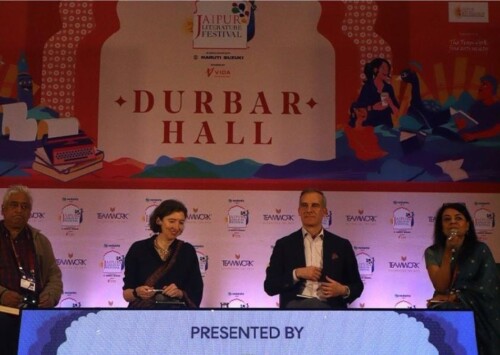Rising occurrence of ‘free’ deals distort economic data
Data replaces money as digital platforms redefine real value
Ad-supported “free” platforms like YouTube and Spotify monetise users’ time, data, and attention instead of cash, reshaping consumption. But they also distort productivity metrics and challenge how economies measure real value.
When Spotify rolls out another “free” playlist or YouTube begins yet another auto-play chain, users rarely think of these as economic acts. Yet these micro-moments of attention form the foundation of a multi-trillion-dollar ecosystem reshaping how growth, productivity, and consumption are measured.
In 2024, global digital advertising revenues hit USD 259 billion, up 15 pc from 2023, according to the Interactive Advertising Bureau (IAB). Google alone earned USD 237.86 billion from ads, while Meta’s advertising income reached USD 113.6 billion, accounting for 97.5 pc of its total revenue. These numbers reveal an unseen market, one powered not by direct transactions but by human attention and behavioural data.
“If you are not paying for the product, you are the product. Your attention, habits, and emotions are monetised, traded, and optimised for profit. The data you surrender, even unknowingly, is the currency of a system that redefines consumption itself,” Ramanand Pandey, Director, Centre of Policy Research and Governance (CPRG), an independent, non-profit think tank, tells Media India Group
The problem, he argues, is not that these platforms are free, it is that they trade in a currency GDP doesn’t recognise.
Also Read: Adolescence in Digital age: Navigating online challenges and perils
A hidden economy of attention
Streaming a song on Spotify or watching a vlog on YouTube doesn’t register as “consumption” in national accounts. But those minutes convert into measurable value in boardrooms through ad impressions, data profiles, and algorithmic insights. Traditional metrics track money changing hands, not the millions of unseen microtransactions of time, preference, and identity that underpin digital trade.
Research by a business consulting firm, Deloitte (2024) estimates that every hour of digital engagement generates about USD 0.45 in ad-based monetisation for platforms, depending on user demographics and region. Multiply that by YouTube’s roughly 2.7 billion monthly active users, and the “free” experience adds up to a staggering shadow economy where engagement equals currency.
The Bureau of Economic Analysis (BEA) in the United States acknowledges this gap, noting in a 2024 report that GDP underestimates digital welfare by up to 2 pc because unpaid digital services are treated as “non-market activities.” In plain terms, the economy as we measure it undercounts a growing share of modern life.
When productivity gets rewired
These platforms not only alter how value is recorded, but how people spend their time. A 2025 OECD Productivity Outlook study estimates that workers globally lose an average of 2.1 hours per workday to non-productive screen time, much of it on ad-supported apps. That lost time, though invisible in GDP, translates into significant output costs.
“The economic paradox is that platforms grow richer the longer users stay ‘distracted.’ But productivity, well-being, and even traditional consumption can decline. GDP records ad revenue, not the hours of human focus it erodes,” says Pandey.
Moreover, digital engagement has shifted consumption patterns. Ad-driven algorithms push users toward impulse buys, often for products with questionable utility. In 2024, Statista, a global data and business intelligence platform, reported that 57 pc of US consumers admitted to making at least one purchase influenced by an online recommendation, a form of consumption invisible to traditional “buyer-seller” flows, where revenue is attributed to advertisers, not end-users.
“Data doesn’t just leave your device, it leaves your economic model behind. The user becomes both resource and researcher, generating the insights that corporations convert into stock market value. The question is no longer who owns the data, but who owns the outcomes,” Pandey adds.
The business of “free”
Unlike traditional billboards or television slots, digital ads use performance-based pricing models such as cost-per-click (CPC), cost-per-impression (CPM), and cost-per-action (CPA). In these arrangements, payment depends on user behaviour, ensuring advertisers only spend when they capture engagement.
This model has made digital marketing remarkably efficient. As per data by eMarketer, market research company, US digital ad spends reached USD 258.6 billion in 2024, with some campaigns yielding a return of USD 42 for every USD 1 spent. Businesses gain from precision targetting, but users “pay” with granular data about their consumption habits, social networks, and emotions, generated and refined simply by scrolling or clicking.
Spotify, for instance, offers its free tier to over 345 million listeners as of 2025, using listening patterns to build rich psychographic profiles. These datasets don’t just improve ad targetting, they feed into AI tools for brand research, sentiment analysis, and product design.
This silent data extraction, largely unseen and untaxed, raises the question that if engagement drives growth, should policy frameworks evolve to capture that value, and protect the people generating it?
New rules for a “free” world
Even if belatedly, governments are beginning to act. Regulatory shifts in the US and India suggest a growing recognition that “free” digital services impose measurable social and economic costs.
Data privacy and digital regulation are evolving toward restoring user agency and accountability in design and economics. In the US, the amended California Consumer Privacy Act (CCPA, 2025) now mandates explicit consent before personal data is shared, closing loopholes that previously enabled cross-app tracking, while India’s Digital Personal Data Protection Act (DPDP, 2023) introduces strict consent norms, though full implementation awaits detailed guidelines. Both frameworks aim to curb manipulative targeting that fuels compulsive consumption.
At the same time, behavioural regulation is taking shape as both nations move against “dark patterns”, India’s 2023 guidelines ban deceptive design tactics like forced sign-ups and false urgency cues, and California’s Algorithmic Decision-Making Transparency Rules (ADMT, 2025) demand disclosure of how recommendation engines influence user behaviour, signalling a shift toward accountable algorithms.
Fiscal tools are also entering the realm, with India’s Equalisation Levy (2020) taxing foreign digital advertisers and the OECD’s Pillar One and Two proposals pushing for global redistribution of digital profits; economists estimate a modest 2 pc levy on digital ads could yield over USD 5 billion annually for public digital literacy and mental health initiatives. Complementing these moves, regulatory transparency is advancing, since 2025, the US Federal Trade Commission has required platforms to report on user engagement, algorithmic manipulation, and breaches, while India’s draft Digital India Act (2025) plans similar disclosures, including data on user well-being, marking a turn toward measuring and managing the invisible costs of the digital economy.
Together, these moves signal a shift toward making non-monetary aspects of digital economics, privacy, time, and mental health, visible in policy and corporate reporting.
Also Read: 51 pc of Indian shoppers prefer AI chatbots and QR codes for online shopping: Capterra
Beyond the Illusion of “Free”
Ad-supported platforms have democratised access to information and entertainment, but they have also blurred the boundaries of what counts as economic value. When time and attention replace cash, traditional metrics lose clarity.
“The next great economy won’t be measured in dollars but in data flows and minutes of consciousness. Whether that becomes progress or exploitation depends on how transparently we value what is currently invisible, the cost of our attention,” says Pandey.
The challenge for policymakers and economists now is not to eliminate these platforms, but to quantify what they truly cost and contribute. Because in a world where data, attention, and behaviour are traded as commodities, the real price of “free” is no longer zero.










